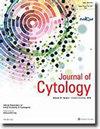辅助技术在血清液细胞学报告中的作用--"重新定义类别,细化诊断"
IF 1
4区 医学
Q4 MEDICAL LABORATORY TECHNOLOGY
引用次数: 0
摘要
国际浆液细胞学报告系统(TIS)"与细胞形态学一起促进了辅助技术的使用,以解决浆液细胞学报告中的难题。 根据 "TIS "对我科接收的浆液性渗出液样本进行分类,指出恶性肿瘤风险(ROM),并指导适当使用辅助检测。 前瞻性研究于 2021 年 10 月至 2022 年 9 月进行。研究包括根据 "TIS "报告的所有胸腔积液、腹水和心包积液样本。流式细胞术和免疫细胞化学是协助报告的辅助方法。有病史和令人信服的相关性的病例无需进一步评估。 共评估了 1200 份浆液性渗出液样本,包括 604 份胸膜液样本、591 份腹水样本和 5 份心包积液样本。经过分类,有 23 份样本为非诊断性样本(ND,1.9%),575 份样本为恶性阴性样本(NFM,47.91%),44 份样本为意义不明的不典型样本(AUS,3.66%),64 份样本为恶性可疑样本(SFM,5.33%),494 份样本为恶性样本(MAL,41.16%)。辅助研究有助于对26%(11/44)的AUS病例和29.6%(19/64)的SFM病例进行重新分类,并有助于完善35.42%(175/494)的恶性病例的肿瘤特征。每个类别计算出的最终 ROMND 25%、NFM 18.6%、AUS 66.6%、SFM 88%、MAL 100%。 血清液是一种很容易获得的样本,可以为具有临床意义的辅助检查提供机会。在 AUS 和可疑类别中,虽然诊断率有所提高,但需要更多的病例才能获得明确的结果。本文章由计算机程序翻译,如有差异,请以英文原文为准。
Role of Ancillary Techniques in Reporting Serous Fluid Cytology – “Redefining Categories, Refining Diagnosis”
The “International System of Reporting Serous Fluid Cytology (TIS)” together with cytomorphology promotes the use of ancillary techniques to resolve difficulties in reporting serous fluid cytology.
To classify serous effusion fluid samples received at our department in line with “TIS”, indicating the risk of malignancy (ROM), and directing appropriate usage of ancillary testing.
Prospective study carried out from October 2021 to September 2022. The study included all pleural, ascitic, and pericardial fluid samples, reported according to ‘TIS’. Flow cytometry and immunocytochemistry were ancillary methods utilized to assist in reporting. Cases with available history and convincing correlations didn’t require further assessment.
A total of 1200 serous effusion samples were evaluated including 604 pleural, 591 ascitic, and 5 pericardial fluid samples. After categorization, there were 23 samples in non-diagnostic (ND, 1.9%), 575 in negative for malignancy (NFM, 47.91%), 44 in atypia of undetermined significance (AUS, 3.66%), 64 in suspicious for malignancy (SFM, 5.33%), and 494 in malignant category (MAL, 41.16%). Ancillary studies were beneficial in the recategorization of 26% (11/44) AUS cases, 29.6% (19/64) SFM cases, and it helped refine tumor characteristics in 35.42% (175/494) cases categorized as malignant. Final ROM calculated for each category: ND 25%, NFM 18.6%, AUS 66.6%, SFM 88%, and MAL 100%.
Serous fluid is an easily obtainable sample that can provide opportunities for ancillary testing with clinical implications. In AUS and suspicious category although, diagnostic yield is increased however, a larger number of cases are required to obtain definite results.
求助全文
通过发布文献求助,成功后即可免费获取论文全文。
去求助
来源期刊

Journal of Cytology
MEDICAL LABORATORY TECHNOLOGY-
CiteScore
1.80
自引率
7.70%
发文量
34
审稿时长
46 weeks
期刊介绍:
The Journal of Cytology is the official Quarterly publication of the Indian Academy of Cytologists. It is in the 25th year of publication in the year 2008. The journal covers all aspects of diagnostic cytology, including fine needle aspiration cytology, gynecological and non-gynecological cytology. Articles on ancillary techniques, like cytochemistry, immunocytochemistry, electron microscopy, molecular cytopathology, as applied to cytological material are also welcome. The journal gives preference to clinically oriented studies over experimental and animal studies. The Journal would publish peer-reviewed original research papers, case reports, systematic reviews, meta-analysis, and debates.
 求助内容:
求助内容: 应助结果提醒方式:
应助结果提醒方式:


